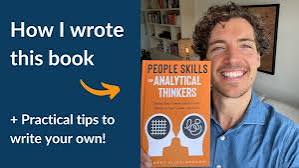How to Write and Self-Publish a Book That Sells

Introduction
- The power of self-publishing in today’s digital age, offering authors complete control over their work and profits.
- The importance of writing a book that not only fulfills your passion but also appeals to a market.
- Key steps to ensure your book is marketable, high-quality, and reaches the right audience.
1. Identify Your Target Audience and Niche
- Understanding who your ideal readers are: age, interests, challenges, and reading preferences.
- Researching popular genres and niches that align with your passion and the market demand.
- Analyzing competition: Studying bestsellers and understanding their appeal to ensure your book stands out.
2. Plan and Outline Your Book
- Why a solid outline is essential for maintaining structure and flow throughout the writing process.
- Breaking down your book into chapters or sections that guide readers seamlessly from beginning to end.
- Setting realistic writing goals and deadlines to maintain progress without burnout.
3. Write a Captivating and Engaging Manuscript
- Tips for staying motivated and disciplined during the writing process (e.g., daily word count goals, writing sprints).
- The importance of writing with clarity, consistency, and purpose to keep readers hooked.
- Editing as you go vs. finishing your draft before editing: Finding the right balance to keep moving forward.
4. Edit and Proofread Your Manuscript
- The value of professional editing to refine your manuscript and enhance its readability.
- How to self-edit effectively: Cutting unnecessary content, improving sentence structure, and enhancing character development (for fiction) or clarity (for non-fiction).
- Tools like Grammarly or ProWritingAid to assist with grammar and stylistic issues before seeking professional help.
- The benefits of hiring a professional editor and proofreader to ensure your manuscript meets publishing standards.
5. Design a Professional Cover and Interior
- The importance of a visually appealing book cover: How it’s often the first thing potential readers notice.
- Using tools like Canva for DIY covers or hiring a professional designer for a polished look.
- Formatting your book’s interior: Ensuring proper layout, typography, and readability for both eBook and print versions.
- Platforms like Reedsy or Fiverr to find affordable book designers.
6. Choose the Right Self-Publishing Platform
- An overview of popular self-publishing platforms:
- Amazon Kindle Direct Publishing (KDP): The most widely used platform for eBooks and print books.
- IngramSpark: Best for print-on-demand books with wider distribution options.
- Smashwords: Distributes eBooks to various retailers and libraries.
- Draft2Digital: Helps with formatting and distribution to multiple eBook platforms.
- How to evaluate platforms based on your book’s format, audience, and distribution goals.
7. Set Your Price and Royalties
- How to determine the right price point based on your book’s genre, length, and market competition.
- The pros and cons of pricing your book low to attract more readers vs. pricing it higher for higher profit margins.
- Understanding royalty structures: How royalties work on platforms like KDP (typically 35%-70% royalties).
- How to experiment with pricing strategies, such as offering the book for free or at a discount for a limited time to increase visibility.
8. Create a Marketing and Promotion Plan
- Building an author platform: How to use social media, a website, and email newsletters to build an audience before you publish.
- Crafting a compelling author bio, book description, and social proof (e.g., testimonials, early reviews) to encourage purchases.
- How to leverage your book launch: Hosting a virtual launch party, offering bonuses, or creating special deals to generate initial sales.
- Using Amazon Ads, Facebook Ads, and Goodreads to promote your book and increase visibility.
9. Leverage Reviews and Social Proof
- The importance of gathering honest reviews: How positive reviews can boost your book’s credibility and sales.
- Approaching book bloggers, influencers, and readers for honest reviews and feedback.
- How to ask for reviews without being pushy and maintaining a professional relationship with readers and reviewers.
- Leveraging user-generated content: Encouraging readers to share their reviews on social media and tag you.
10. Continue Promoting and Building Your Author Brand
- How to keep the momentum going after the initial launch: Continue promoting through email marketing, content marketing (e.g., blogging or guest posting), and social media.
- Building your author brand: Engaging with readers, sharing personal stories, and positioning yourself as an expert in your niche.
- Exploring opportunities for book series, audiobooks, and speaking engagements to expand your reach.
Conclusion: Achieving Long-Term Success with Self-Publishing
- Self-publishing a book that sells requires dedication, market research, and continuous marketing efforts.
- The key to success lies in creating a quality product, knowing your audience, and staying consistent with your promotional efforts.
- By following these steps and committing to the process, you can build a sustainable writing career and enjoy the rewards of self-publishing.
Â
Â
💔 “She said she loved me. And for fifty-two years, I believed her.” 💔
“Beat the Pressure: A Comprehensive Guide to Lowering Blood Pressure Naturally.”
Buy book from Gumroad or Paystack
Buy The Book "The Longest Lie: A Husband’s Journey Through Love, Betrayal, and Redemption" From Gumroad
Â






